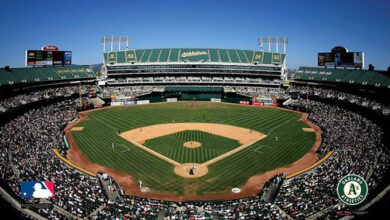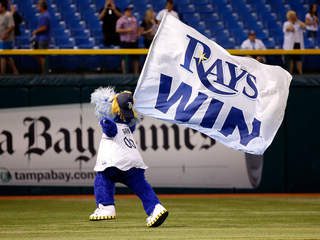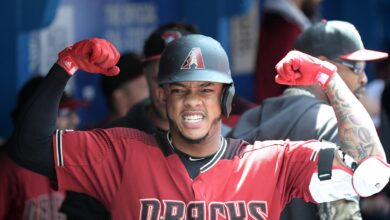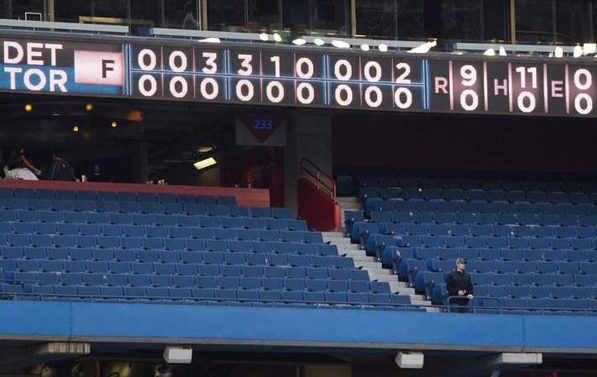


For most of us folks, life is a roller coaster of thrilling achievements, plummeting failures and the tedious effort that lies in between.
This is true in our jobs, our relationships and, if you’re foolish enough to partake, it is painfully true in sports. The exhilarating wins heal the wounds of the agonizing losses, and we spend most of the time waiting somewhere in between hoping for the best but expecting the worst. As in life, there is no such thing as perfection in sports. No one team can win the championship year after year.
Over the last decade or so, fans of the Philadelphia Phillies and the Boston Red Sox have been rewarded for the seemingly interminable suffering they endured during the twentieth century.
However, 2014 has been a whole different year. I’m assuming you know how calendars work, but what I mean is that both of these teams are currently among the worst in the league.
After almost 100 years of disappointing results, the Red Sox rose to the top of the heap and won the World Series in 2004. They won again in 2007. Then after a few bumpy years causing me to worry about my five-year-old nephew who had never seen a Red Sox championship in his lifetime, they won again in 2013.
The Phillies had a very nice run as well, playing in two World Series and winning one of them. Also, as recent as 2010, they lead the league with 103 wins. This year, both teams are on pace to lose about 90 games and finish last in their divisions.
It seems odd that a team that was so dominant one year could fall apart in that short a time. But this is baseball, and there’s a lot of moving parts that can (and did) break down. However, if you look closer at the Phillies, you can see that they had significant failings organizationally that lead to their demise.
Despite being in last place, the Boston fans and even their highly combustible media has been somewhat tame. Sure, everyone’s smoking a metaphorical cigarette in the sultry afterglow of the World Series championship.
There’s something else, though, keeping Red Sox fans calm. Organizationally, Boston has been quite sound. The Phillies were loving life at the top of the roller coaster, but they didn’t really know how they got there and when they began their descent, they derailed into a fiery heap. Philadelphia has a terrible team and the third-highest payroll in baseball with almost no hope of fielding a winning team for the next couple years.
The real difference between this Boston team and the Phillies is that the people running the Red Sox actually seem to know what they’re doing.
Free-agent contracts
In the offseason, the Red Sox let Jacoby Ellsbury get away and, while they were obviously going to miss his offensive production and handsomeness, the Red Sox had learned from past spending mistakes and decided to let him go to probably the one team that didn’t actually need him.
Okay, can we talk about this for a second? I know the Yankees felt they were getting one over on the Red Sox by signing Ellsbury, but they already had the cheaper and in some ways better Brett Gardner. Fortunately, New York didn’t spend that money on starting pitching because that’s something they needed and need even more now.
Anyway, back to the Red Sox. They had been burned previously by the monstrously huge contracts to Adrian Gonzalez and Carl Crawford, so they decided to go with top prospects instead. While Jackie Bradley Jr.’s offense has been anemic — of course, that can be said of just about everyone in the lineup — he’s been the best defensive center fielder in baseball this year.
They just aren’t handing out stupid contract extensions — a move the Phillies have perfected — and they have one of the better minor-league systems in baseball with a slew of high-probability pitchers and position players.
The league is getting smarter, and the front office for Philly just doesn’t quite seem up to the task. Granted, they made some really nice trades a few years back, stealing top-level talent from the Astros when Houston’s general manager was former Phillies’ GM Ed Wade. But Ed Wade is gone from Houston, so that system doesn’t work anymore.
The contracts they’ve handed out to Jimmy Rollins, Jonathan Papelbon and Cliff Lee have been terrible and completely untradeable.
And if we’re talking about terrible contracts, we have to bring up the Ryan Howard contract. It was an extension he signed with the team at the peak of his value with no hometown discount and two years before any extension was needed. How could that possibly go wrong?!? Well, like most heavyset ballplayers, his skills diminished quickly, and in the last play of that season, he blew out his Achilles tendon. This was before the contract extension actually started.
Sure, no one can predict an injury. But the real crime of the contract is that he was being rewarded for having a lot of RBI (runs batted in). So, in essence, he was being rewarded for having the ability to have runners on base in front of him when he was batting. Sorry, like levitation, teleportation, French hygiene and making a woman happy, this is an ability that does not actually exist.
The trade deadline
Nowhere was the Red Sox organizational superiority more on display than at this past trading deadline when Boston traded away three quality pitchers — two of whom were soon-to-be free agents — and got players in return who could start contributing right away.
They could’ve gone for more prospects, but their prospects cup runneth over. Or worse, they could’ve gotten hosed like the Tampa Bay Rays dumping David Price on the Detroit Tigers for less than everyone ever thought.
The Red Sox plan to win next season, so they traded pitching ace Jon Lester for slugging outfielder Yoenis Cespedes to infuse life into their weak outfield. And who knows? Maybe the Red Sox will sign Lester as a free agent in the offseason.
They traded John Lackey to the Cardinals for Allen Craig and Joe Kelly, who then helped the Red Sox win his first game with the team — against the Cardinals. And they grabbed top-100 prospect Eduardo Rodriguez from the Orioles for two months of left-handed reliever Andrew Miller.
The Phillies did nothing. They have pieces to trade and they did nothing. Their team is loaded with aging veterans who might be of some small value to a team with playoff potential. You can get prospects for those kinds of guys. Trade them. It doesn’t matter if you win 70 games or 75.
The future
A lot of what the Red Sox decided to do last offseason made sense on paper, but when it all hit the field, it just didn’t work out. They saw that they were out of the playoffs this year and they started making changes to help them in 2015 — which, as you know from your knowledge of calendars, is just next year.
The Phillies future appears much more bleak. They don’t have a very good farm system, and their payroll is already through the roof. I would say they should fire their GM, but I’m terrible at baseball and I get injured a lot, so he’ll be giving me a multi-million dollar contract any moment now.
Last year, the roller coaster sent the Red Sox all the way to the top and this year they plummeted down with a free fall. But it’s a controlled free fall and, unlike the Phillies, this team knows exactly what it’s doing and is just getting ready for the next upward cycle.





